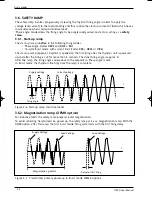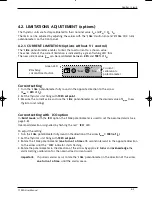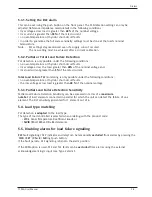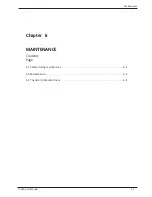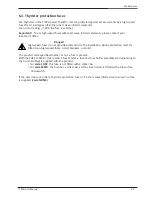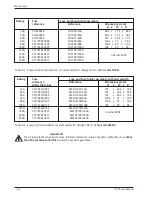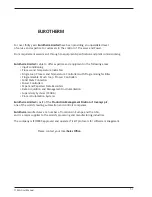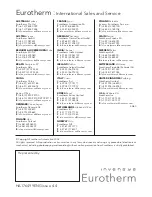
7100A User Manual
5-7
Alarms
5.7. OVERLOAD ALARM (ICO option)
The type 2 alarm (
Over-current
alarm) monitors the maximum current value.
This alarm (and option) is known as
ICO
(
I
ntelligent
C
hop
O
ff).
5.7.1. Availability
The ICO option is available in
zero-crossing
firing modes (‘Burst mode’ and ‘Single-cycle’) provided
the
DLF
option is fitted.
The ICO option is not available for short wave infrared elements and transformers (code SWIR or
XFMR), or in control with current limit (code VICL or V2CL).
5.7.2. Alarm conditions
With the ICO option an
Over load
fault is detected if one of the following two conditions occurs:
• the
instantaneous
current on one phases exceeds a threshold of
150%
of the instantaneous rated
current (
1.5
√
2 I
max
)
• the
rms
load current (over 5 consecutive seconds) on the phase exceeds a threshold of 110% of
the recalibrated rms current (
1.1 I
max
).
The instantaneous or rms current threshold can be adjusted with the ‘
I lim
’ potentiometer during the
current calibration phase, from 20% to 100% of the nominal current for the thyristor unit.
5.7.3. Alarm Actions, Memorisation, Acknowledgement
If an over-current alarm is triggered, thyristor firing
stops
:
• at the end of the half-cycle when the instantaneous current threshold is exceeded
• after approx. 5 s of continuously exceeding the rms current threshold.
Over-current alarm cut-off is signalled as follows:
• the position of the Alarm relay
contact
changes
• the ‘
...ICO
’ LED
flashes
(and turns red).
Important:
• The ‘ICO’ LED starts flashing as soon as the rms current
exceeds
the threshold; i.e.
5 s
before
firing may be cut off.
•
Setting
the Over-current alarm threshold in operating conditions is described on
page 4-4
.
Red LED:
"Over-current fault"
Alarm threshold
simultaneous adjustment
potentiometer
(for rms current
and instantaneous current)
GRF
DLF
CHK
A
SET
...
ICO
I
LIM
+
Figure 5-4 Layout of the ‘ICO’ LED and ‘I lim’ potentiometer with the ICO option
The over-current alarm cut-off is
memorised
.
The thyristor unit remains cut off and signals the alarm status.
The Over-current alarm may be
acknowledged
by applying
+5 V
to the ‘
ACK
’ terminal on the ‘
DIG.IN
’
terminal block (logic signal inputs). The internal supply (‘
5VD
’ terminal) or an external source may be
used to acknowledge the alarm remotely (see figure 2-12).


